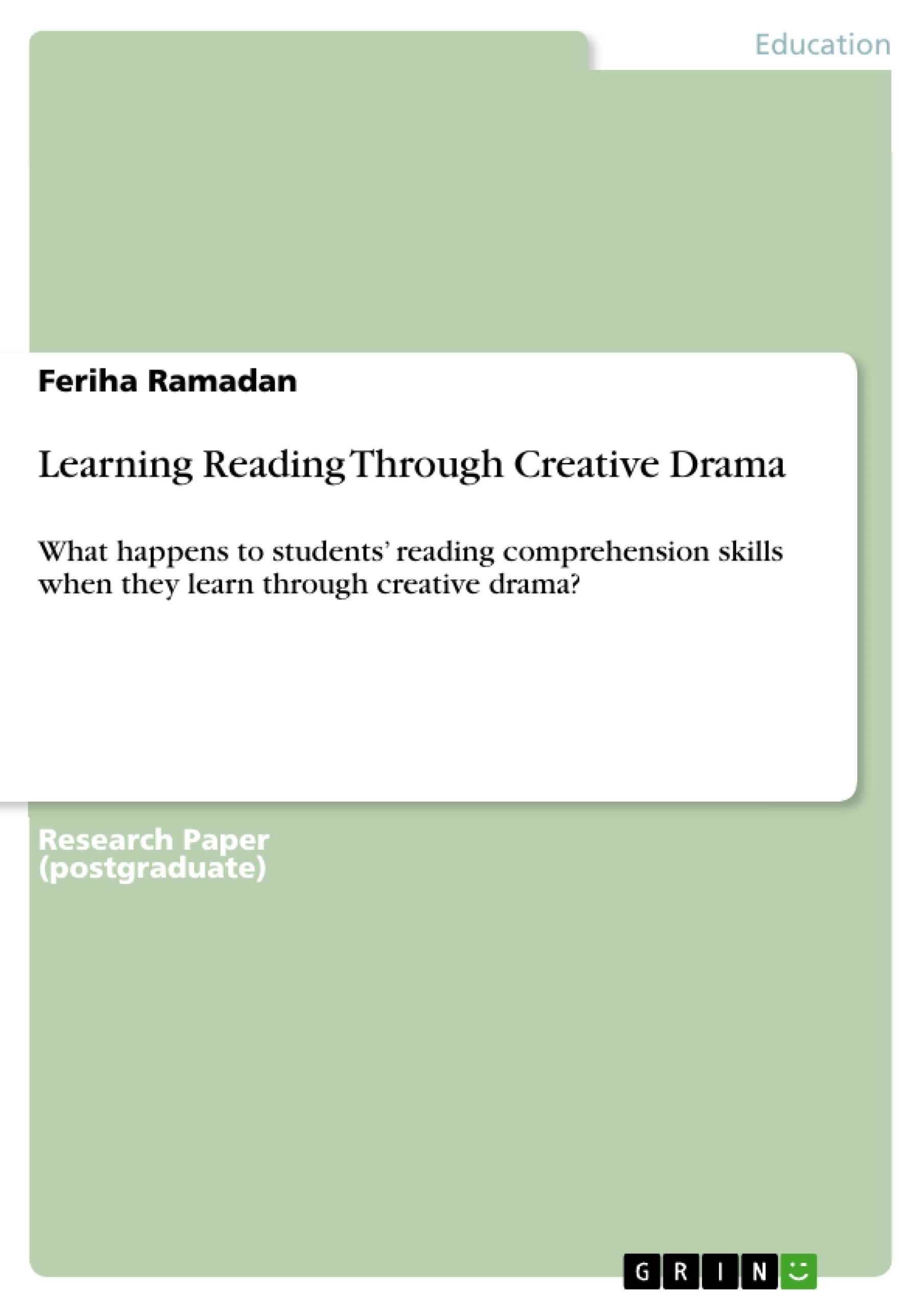The aim of this study was to discover what happens to students’ reading comprehension skills in high school when they use creative drama rather than traditional methods. The researcher combined creative drama with reading through different activities. The students who were assessed were Turkish mother-tongue speakers. Two classes from the same year received instruction in the differing methods over a three week period. Data were collected and the pre to post changes were compared using a two tailed independent sample t-test. The researcher’s hypothesis was null and this hypothesis was rejected. The results of the study suggested that there was a significant difference between teaching readings through drama over traditional methods.
Inhaltsverzeichnis (Table of Contents)
- Abstract
- Background
- Study location
- Students' demographics
- Researcher's Details
- Reasons for Undertaking the Project
- Importance of the study
- Significance to the researcher
- Significance to the school
- Significance to the students
- Literature Review
- Statement of the Issue to be Investigated
Zielsetzung und Themenschwerpunkte (Objectives and Key Themes)
This research aims to investigate the impact of using creative drama in teaching reading comprehension to high school students, comparing it to traditional methods. The study focuses on Turkish mother-tongue speakers and seeks to determine if drama-based instruction can improve reading comprehension skills. Key themes explored in this study include:- The role of creative drama in enhancing reading comprehension
- Comparison between traditional teaching methods and drama-based instruction
- The importance of engaging students in active learning and promoting creativity
- Developing reading comprehension skills through visualization and imagination
- The significance of drama in fostering critical thinking and communication skills
Zusammenfassung der Kapitel (Chapter Summaries)
- Abstract: This section provides a brief overview of the research study, including the research question, methodology, participants, and key findings. It highlights the significant difference found between teaching reading through drama and traditional methods.
- Background: This chapter delves into the context of the study, describing the school setting, students' demographics, and the researcher's background. It emphasizes the importance of reading comprehension and the need to find engaging teaching methods to address declining student interest in reading. The chapter further details the rationale for using creative drama as a pedagogical tool, citing its potential to enhance visualization, interaction, and understanding of literary elements.
- Literature Review: This chapter examines existing research on the benefits of drama in education. It explores how drama can improve language skills, foster creativity, and enhance communication and critical thinking abilities. The review also highlights the connections between reading and drama in developing essential meaning-making skills and fostering a deeper understanding of both text and experience.
- Statement of the Issue to be Investigated: This section formally states the research question, outlining the researcher's interest in exploring the effectiveness of creative drama in developing reading comprehension skills. It outlines the intention to compare this method to traditional teaching methods and to determine if one approach leads to better learning outcomes for students.
Schlüsselwörter (Keywords)
The research focuses on the application of creative drama in the development of reading comprehension skills. It explores themes like active learning, visualization, and engagement in the learning process, highlighting the connection between drama, reading comprehension, and critical thinking.- Citar trabajo
- Feriha Ramadan (Autor), 2009, Learning Reading Through Creative Drama, Múnich, GRIN Verlag, https://www.grin.com/document/180382



